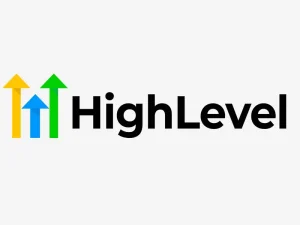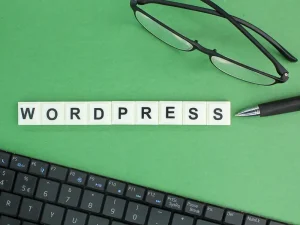How to Create a Social Media Content Calendar
In the fast-paced world of digital marketing, staying organized can feel like juggling flaming torches. With countless platforms buzzing with activity and audiences vying for attention, how do you keep your content strategy on point? Enter the social media content calendar—a game-changing tool that elevates your content marketing efforts. Whether you’re a seasoned person or just dipping your toes into the social media pool, having a well-structured calendar can streamline your planning process and ensure consistency across all channels. Let’s dive in and explore how creating a social media content calendar can transform how you engage with your audience!
Understanding the Importance of a Social Media Content Calendar
A social media content calendar is more than just a scheduling tool; it’s your readmit’s success. With it, you can visualize your entire content strategy at a glance.
Planning prevents last-minute scrambles for posts. This not only reduces stress but also allows time for thoughtful creativity. Quality over quantity becomes the mantra when you’re organized; consistency is key in digital marketing. A well-structured calendar ensures you maintain a steady flow of engaging content across platforms. Regular posting keeps your audience engaged and helps build brand loyalty.
A calendar makes tracking important dates and events throughout the year easier. You can effortlessly align campaigns with holidays, product launches, or seasonal trends.
Analyzing performance metrics becomes simpler as everything is laid out clearly. You’ll know what you’re best at and refine your approach accordingly—making every post count!
Steps to Creating a Social Media Content Calendar
Creating a social media content calendar involves several key steps that can streamline your digital marketing efforts. Start by defining your goals and identifying your target audience. Knowing who you’re speaking to will shape the type of content you create.
Next, choose the right platforms for your brand. Each social media channel has its unique audience and format, so select those that align with your strategy.
Then, determine how often you’ll post andyou’llat times. Consistency is crucial in maintaining engagement across channels.
Brainstorm engaging content ideas and themes relevant to both your audience’s inteaudience’scurrent trends. This creativity keeps your feed fresh while also establishing authority in content marketing.
Together, these steps lay a solid foundation for an effective social media presence without overwhelming yourself or straying from objectives.
A. Define Your Goals and Target Audience
Defining your goals is the first step toward an effective social media content calendar. What do you want to achieve? Increased brand awareness and engagement, or perhaps driving more traffic to your website?
Once you’ve set cleayou’vectives, it’s time to idit’sfy your target audience. Understanding who they are will shape your entire strategy. Consider demographics like age, location, and interests.
Dive deeper into their online behavior too. Where do they spend their time? What type of content resonates with them? This clarity helps tailor messages that speak directly to their needs.
Aligning your goals with a well-defined audience ensures that every piece of content serves a purpose. It sets the stage for meaningful interactions and measurable success in digital marketing initiatives.
B. Choose the Right Platforms
Selecting the right platforms is crucial for effective social media marketing. Each platform caters to different demographics and content types.
Consider where your target audience spends their time. For instance, younger audiences often flock to TikTok and Instagram, while professionals lean towards LinkedIn.
Content types also play a significant role. If you’re focused you’reuals, Pinterest or Instagram may be ideal choices. Conversely, if you want to share detailed articles or insights, Facebook or LinkedIn could serve you better.
Don’t forget abDon’tngagement metrics too. Platforms that foster interaction can boost your visibility and brand loyalty.
Experimentation is also key in this process. Start with a few channels and analyze which ones yield the best results before expanding into other spaces within digital marketing.
C. Determine Posting Frequency and Timing
Finding the right posting frequency is crucial for maximizing engagement. Too few posts and your audience may forget about you; too many can overwhelm them. Striking that balance keeps your brand top-of-mind without becoming intrusive.
Consider your target audience’s habiaudience’sey more active in the mornings or evenings? Tailor your schedule to align with these peak times. Utilize insights from platform analytics to understand when most of your followers are online.
Experimentation plays a key role here. Start with a consistent schedule and monitor performance closely. Track likes, comments, shares, and other metrics to gauge effectiveness over time.
Don’t forget abDon’tontent variety! Mixing up post types—like images, videos, or polls—can keep things fresh and engaging while also maintaining interest among your followers throughout the week.
D. Brainstorm Content Ideas and Themes
Generating fresh content ideas can be invigorating. Start by tapping into your brand’s voice abrand’ses. Reflect on what resonates with your audience.
Consider trending topics in your industry. Use tools like Google Trends or BuzzSumo to discover popular themes that engage users. Please don’t shy away Don’tseasonal events; they provide a perfect backdrop for timely posts.
Engage directly with your audience through polls or surveys. Their feedback can be a goldmine for new ideas, revealing what interests them most.
Use brainstorming sessions with your team to explore various angles on a subject. Diverse perspectives often lead to innovative concepts that might not surface individually.
Keep an inspiration folder where you save articles, images, and videos that capture attention. This resource will come in handy when you’re ready toyou’ree compelling content tailored for social media platforms.
Tools for Creating and Managing Your Social Media Content Calendar
Creating a social media content calendar is essential, but having the right tools can make all the difference. Digital calendars and spreadsheets are classics for many marketers. They offer simplicity and flexibility, allowing you to customize your layout easily.
Social media management platforms are invaluable for those seeking more advanced features. Tools like Hootsuite or Buffer provide scheduling capabilities and analytics in one place. You can plan posts ahead of time and analyze performance without switching between apps.
Cloud-based tools like Google Sheets or Trello make collaboration with teams seamless. These options allow multiple users to contribute ideas, making brainstorming sessions efficient.
Choose what works best for you based on your specific needs. The goal is to have a streamlined process that enhances your digital marketing strategy while keeping your content fresh and engaging across various channels.
A. Digital Calendars and Spreadsheets
Digital calendars and spreadsheets are excellent tools for organizing your social media content calendar. They provide flexibility, ease of access, and collaboration features that traditional methods can’t match.
Ucan’ta digital calendar like Google Calendar allows you to set reminders for upcoming posts. Color-coding different types of content helps maintain clarity at a glance.
Spreadsheets, such as Microsoft Excel or Google Sheets, offer more customization. You can create columns for post dates, platforms, topics, and even performance metrics, making tracking your progress straightforward.
Both options enable real-time updates. Team members can see changes instantly, ensuring everyone is on the same page. By leveraging these tools effectively, you enhance your workflow while staying organized in your digital marketing efforts.
B. Social Media Management Platforms
Social media management platforms are essential tools for streamlining your content marketing efforts. They allow you to schedule posts, monitor engagement, and analyze performance all in one place. This can save you considerable time and effort.
Tools like Hootsuite, Buffer, and Sprout Social enable seamless management across various social channels. You can plan your campaigns ahead of time while ensuring consistent messaging.
These platforms also help you track key metrics such as likes, shares, comments, and reach. Understanding these analytics is crucial for refining your digital marketing strategy.
Additionally, many management tools offer features like team collaboration options. This ensures everyone involved stays on the same page regarding posts and branding guidelines.
With a reliable social media management platform at your disposal, you’ll be betteyou’llpped to create engaging content tailored to your audience’s prefaudience’sow to Use Your Social Media Content Calendar
Using your social media content calendar effectively is key to achieving your digital marketing goals. Start by regularly checking and updating the calendar. Consistency is crucial, so stick to your posting schedule as closely as possible.
Once you have planned out your content, it’s time to exit’se it. Create or curate the posts according to the calendar’s guidelines. Use visuals where applicable; images and videos typically garner more engagement than text alone.
Engage with your audience when you post. Responding promptly to comments can foster community and loyalty among followers. Monitor performance metrics for each piece of content, adjusting future strategies based on what resonates most with your target audience.
Don’t be afraidDon’txperiment! Social media trends change rapidly, so staying flexible allows you to adapt quickly. Regularly review and refine your strategy using insights gained from previous campaigns.
With a well-structured social media content calendar in hand, you’re better eyou’red for successful content marketing efforts that drive results and engage users effectively.






